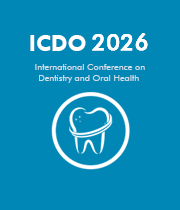Dental Public Health
Dental public health is a branch of dentistry that focuses on populations instead of individuals. It follows a preventive approach to oral health, working to improve dental health by providing education, increasing access to dental care, and creating interventions and policies to prevent the spread of oral diseases. Dental public health efforts generally focus on access to care, prevention of disease, and control of risk factors. The foundation of dental public health lies in community-level approaches to oral health promotion. Examples of these include interventions like school-based fluoride mouth rinse programs, water fluoridation, school dental screenings, and the use of community dental health workers. These programs set up access to preventive oral care, provide education about good oral hygiene practices, and promote lifestyle changes to support oral health. Dental public health initiatives also focus on reducing disparities in oral health, targeting specific populations that may be at higher risk of oral disease. Examples include campaigns to encourage and improve access to preventive care for pregnant women, children, and the elderly. Programs also aim to increase awareness of the risk factors associated with oral disease, such as smoking, poor nutrition, and socio-economic disparities. The goal of dental public health is to work towards reducing the incidence of oral diseases, promoting better oral hygiene practices, and ensuring access to preventive and restorative dental care. By doing so, dental public health efforts can create a more healthy and equitable environment for all individuals.

David Geoffrey Gillam
Queen Mary University of London, United Kingdom
Christopher Turner
Spacemark Dental, United Kingdom




Title : Evaluating hygienist follow up for head and neck oncology patients in secondary care: Results from a two cycle audit
Peter Basta, Newcastle Dental Hospital, United Kingdom
Title : Atypical facial pain unravelled
Christopher Turner, Spacemark Dental, United Kingdom
Title : Cutaneous, Cranial, skeletal and dental defects in patients with Goltz syndrome
Ali Al Kaissi, National Ilizarov Medical Research Center for Traumatology and Orthopaedics, Russian Federation
Title : The nature and management of dental erosion in patients with bulimia nervosa
Maya Fahy, The Royal Victoria, School of Dentistry, United Kingdom
Title : A systematic review on the early detection of oral cancer using artificial intelligence and electronic tongue technology
Maryam, Kardan Dental Clinic, Iran (Islamic Republic of)
Title : Artificial intelligence in clinical decision making in third molar surgery
Tannaz Pourlak, Tabriz University of Medical Sciences, Iran (Islamic Republic of)